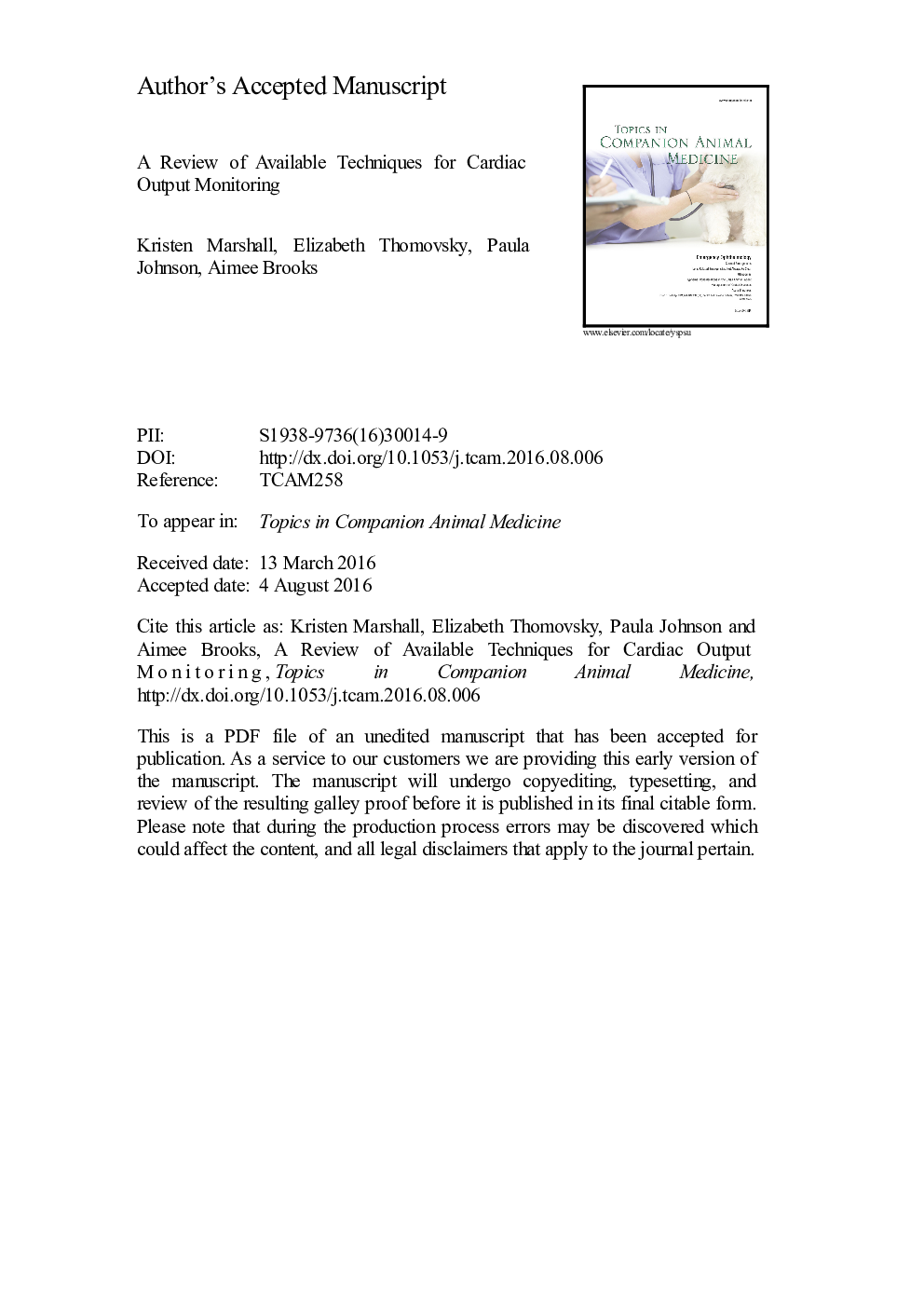| Article ID | Journal | Published Year | Pages | File Type |
|---|---|---|---|---|
| 5536139 | Topics in Companion Animal Medicine | 2016 | 29 Pages |
Abstract
The main objective of fluid therapy is to increase cardiac output (CO). Large, rapidly administered volumes of fluids are the cornerstone of treating patients in shock to restore circulating volume and improve tissue perfusion. However, determining exactly how much fluid a given patient requires can be challenging. If enough fluid is not given, poor tissue perfusion can lead to ischemia, anaerobic metabolism, and ultimately cell and patient death. Conversely, increased morbidity and mortality associated with excessive intravenous fluid administration has been reported in the human literature in a wide variety of conditions. This review focuses on types of available CO monitoring, their application in veterinary medicine as well as current research trends in noninvasive evaluation of CO.
Keywords
Related Topics
Life Sciences
Agricultural and Biological Sciences
Animal Science and Zoology
Authors
Kristen DVM, Elizabeth DVM, MS, DACVECC, Paula DVM, Aimee DVM, MS, DACVECC,
